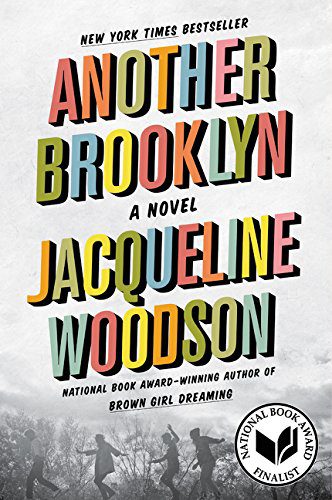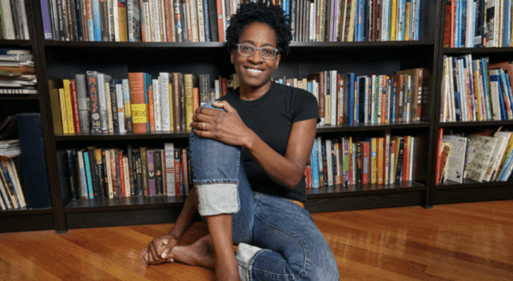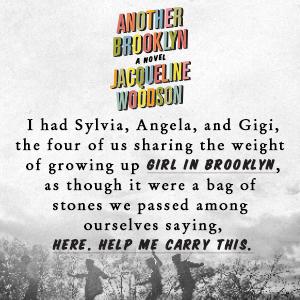
Jacqueline Woodson, winner of the National Book Award, took her own youth, which she chronicled in her memoir-in-verse, “Brown Girl Dreaming” (2016), and used it to write the lyrical novel, “Another Brooklyn” (2017). This dreamlike novel follows the protagonist, August, as she remembers her childhood when she and her younger brother moved to Brooklyn with their father. August lets go of their former life in the South and, in the process, leaves her mother behind – or so she thinks.
Making Sense of the Pain
At the start of Woodson’s novel, adult August has returned to Brooklyn to bury her father. This journey back to the place of her adolescence and seeing an old friend brings on a wave of emotions and nostalgia for August. It’s been 20 years, and August has had a lot of time to reflect on how a motherless youth impacted her. She wonders about herself and her girl friends, “If we had had jazz, would we have survived differently? If we had known our story was a blues with a refrain running through it, would we have lifted our heads, said to each other, This is memory again and again until the living made sense? Where would we be now if we had known there was a melody to our madness?” This question of the power of memory flows through “Another Brooklyn.”

Though adult August now sees the allure of moody jazz, teen August and her friends did not have those melodies as their soundtrack. The pain, confusion and drama of their teenage years were too deep for Top 40 radio hits from the ’70s. August mentions some of that pain, explaining that she and her brother were motherless and that the absence of her mother greatly affected them. However, it’s not until much later in the book that the reason is explained.
Since the family’s move to Brooklyn is shared in bits and pieces over the course of the novel, and August only explains that they’ve left her mother behind, it’s unclear why her mother isn’t with them. There’s love for her from all members of the family, yet she remains in SweetGrove, Tennessee (a town clearly named in homage to Toni Morrison‘s creation of Sweet Home in “Beloved”).
It’s not until August shares that her uncle died in Vietnam that readers gain a window into the soul and anguish of August’s mother. Her mother is tragically haunted by the memory of her brother, claiming to hear his voice and sleeping with a butcher’s knife. Her mother’s mental state continues to devolve until August’s father has no other choice but to leave her behind and begin again with his children in Brooklyn.
This is Memory
“For a long time, my mother wasn’t dead yet.”
As young children, August and her brother waited for their mother to come to them, to return to the family, but she never does. August doesn’t reveal until much later that she, too, was haunted by her mother. She often says, “For a long time, my mother wasn’t dead yet,” meaning for August she wasn’t dead, but she was dead in reality. It’s not until she, her brother and father return to SweetGrove and visit the water’s edge where her mother drowned that she is able to allow her mother to fade into what all of her story has been – memory.

Though some booksellers place “Another Brooklyn” in the Young Adult section, Woodson’s lyrical prose will appeal to adults and teens alike. At the heart of the story, “Another Brooklyn” is about how long people stay with us after they die, which for August – and the rest of us – is forever.

 “Another Brooklyn” by Jacqueline Woodson
“Another Brooklyn” by Jacqueline Woodson


 John Mulaney’s “Funeral Planning” on Netflix: No Real Plan
John Mulaney’s “Funeral Planning” on Netflix: No Real Plan

 Composting Bodies Is Now Legal in a Dozen States
Composting Bodies Is Now Legal in a Dozen States














